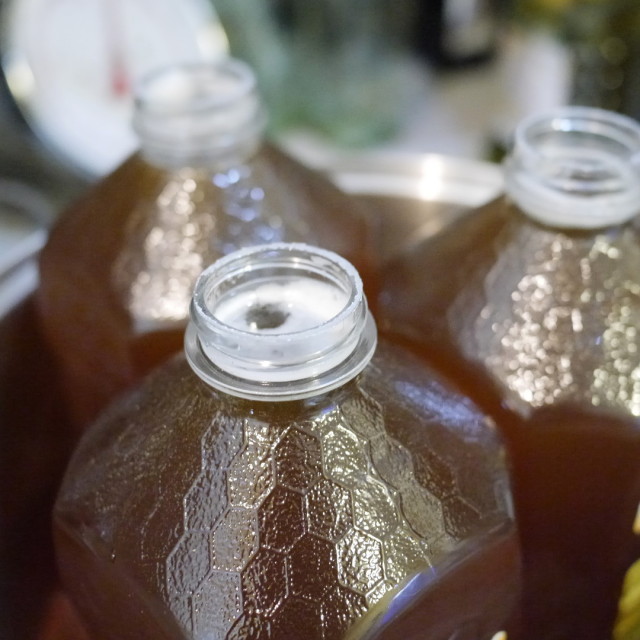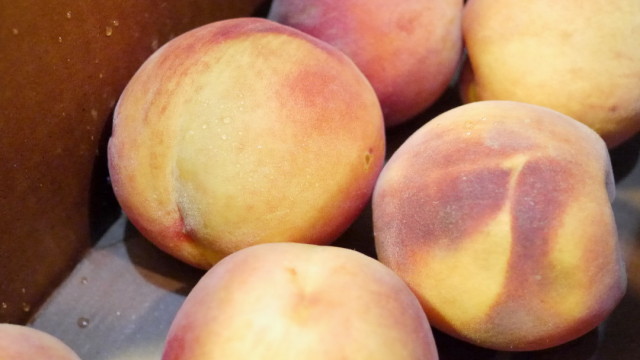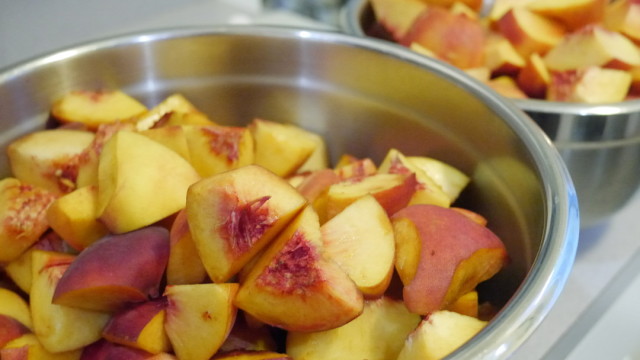Just when I thought I was out, the mead keeps pulling me back in.
It was less than a month ago, now, that I bottled last year’s strawberry melomel. With Sarah’s invaluable help, there was a flurry of sanitizing and syphoning, filling, corking, cleaning, and trundling boxes of bottles down into the basement.
The strawberry mead came out just right: pale pink, with a definite and delicious fruit flavor, and a hint of oxidation that adds toffee complexity at the back end of every sip. It will need to age for a year or two. It’s still a little hot, alcoholically speaking. But I’m pleased. No doubt — one of the better meads I’ve made.
As I was bottling the strawberry melomel, however, I thought to myself — I thought: maybe this year, I’ll just skip it. Mead is so resource intensive, both in terms of the cost of the honey, and in terms of time spent preparing the equipment for racking, aging, bottling etc. This year, I thought, I’ll spend some time enjoying the bottles I’ve already done, and maybe do a new mead next summer, when I have less on my plate.
Yeah, right.
It took about two weeks before the mead bug struck again. I had the opportunity to acquire a large quantity of marked peaches at a not insubstantial discount. And that was all the motivation I required. I bought up the peaches — about sixteen pounds before they were sliced, pitted, and their gross bits discarded. And yesterday: a new melomel dawned.
The final specs on my new peach mead are as follows:
18 lb Butter Bean Honey (chosen for its mild flavor)
12 lb Peaches, pitted and chopped
3.5 gal Filtered Water
1 lemon (juiced, with both the juice and the remaining fruit thrown in)
1 Packet of Dry Champagne Yeast
I didn’t manage to take a hydrometer reading on this monster of a mead because — well — I almost never actually do that. But according to my calculations, the starting gravity should be somewhere around 1.14. And if it ferments all the way out — as I hope it will — the final alcohol will be somewhere around 20%.
I did not exactly intend for such a high-gravity concoction. I meant to add considerably more water to the must. But the volume of fruit was higher than I expected, and I — I ran out of room in my brewing bucket.
I’m a little bit ashamed of that particular piece of poor planning. As soon as I closed the lid, I had visions of foamy yeast spouting up through my airlock. So much did it freak me out that I headed straight over to my local brewing supply shop and purchased fixings to make a blow-off tube.
It’s like an airlock writ large — a wide-gauge hose jammed air-tight into the top of the bucket, with its other end submerged in a half-gallon mason jar, half-filled with water.
I actually think that the blow-off tube is pretty clever. And I’m pleased to see, as of last night, that the mead was fermenting away, pushing positive pressure up and out, and making the water in the jar bubble with audible gulps.
My mead methodology for this peach melomel turns out to be uncomfortably half baked. But now that it’s in the bucket and actively fermenting, I have some very tentative high hopes about how it’ll turn out.
I’ll keep you all apprised.


